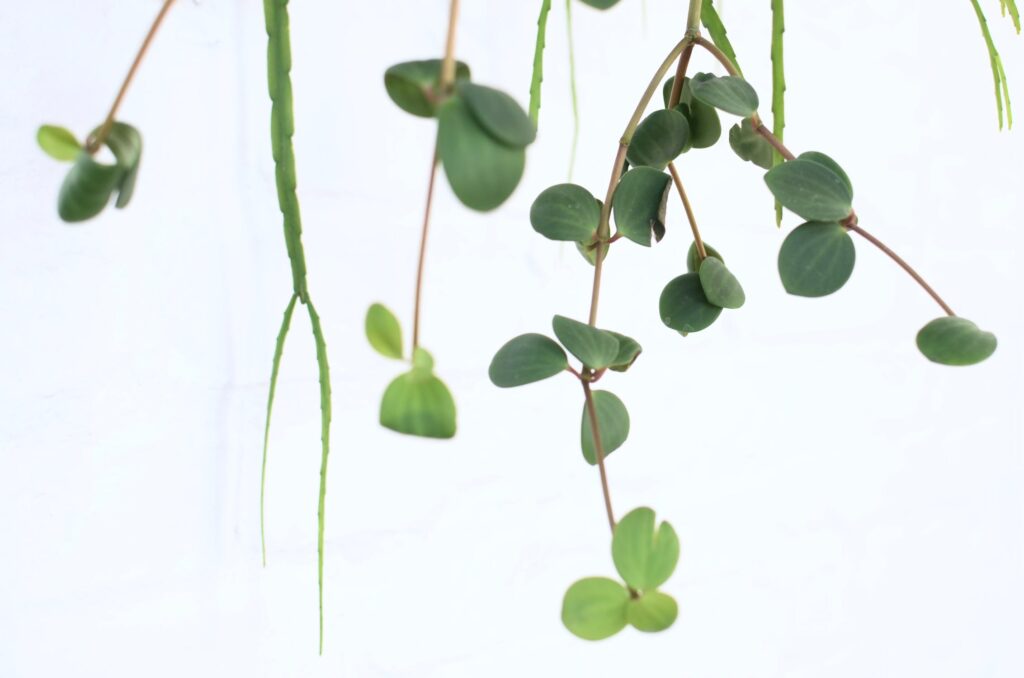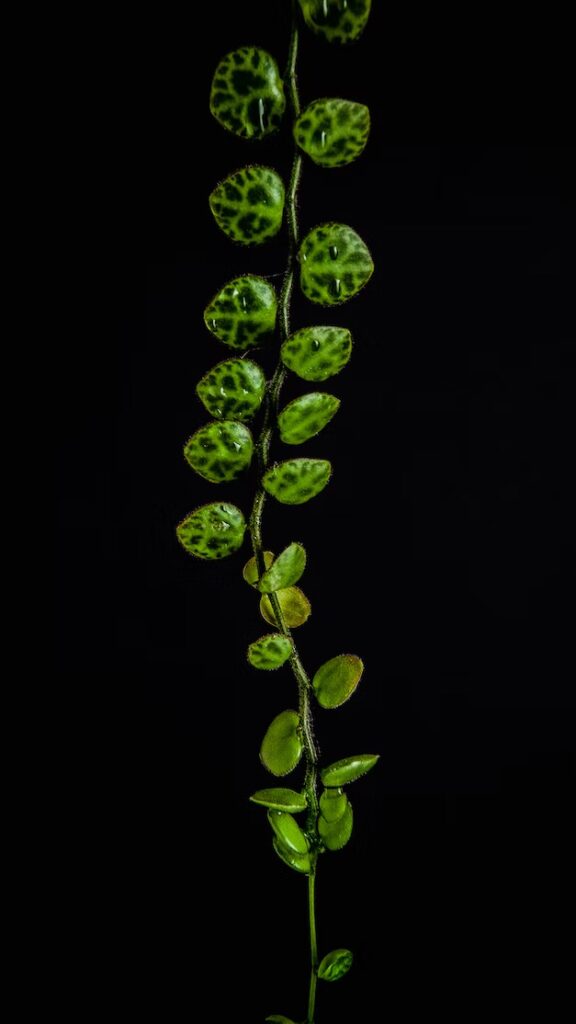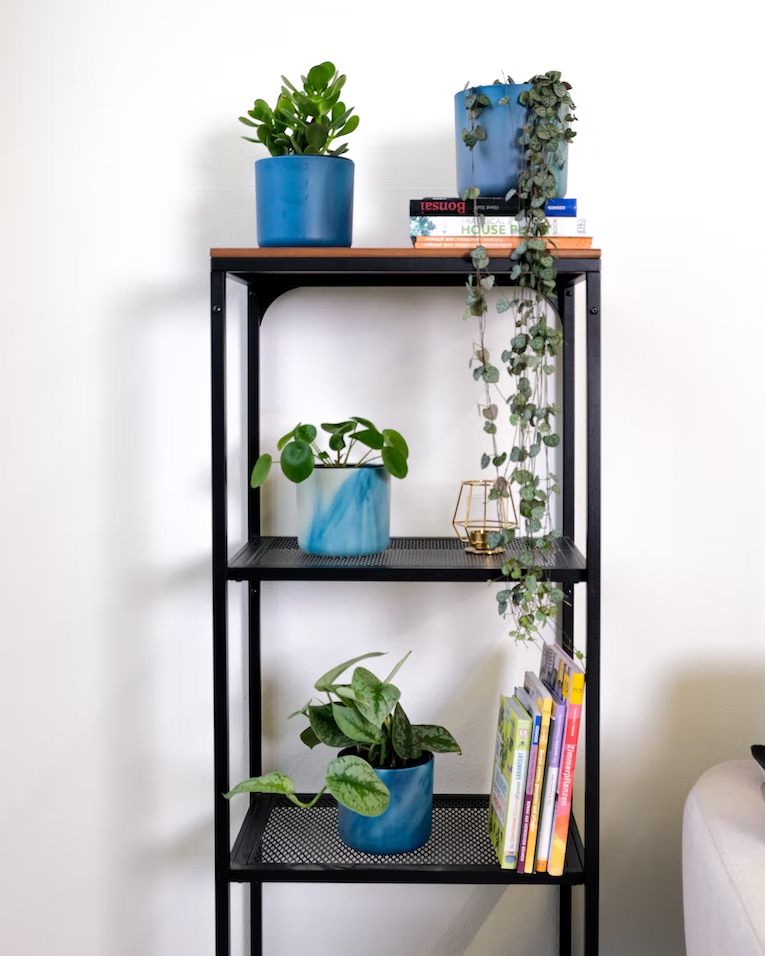
The String of Turtles plant (Peperomia Prostrata), is a type of trailing plant that is native to South America. It belongs to the Peperomia family, which includes over 1,000 species of plants. The String of Turtles plant is named for its unique leaves, which are small and shaped like turtle shells. The leaves are green with a white or cream-colored stripe down the center and have a slightly succulent texture.
it is an excellent choice for those looking for a low-maintenance house plant to add to their collection.The plant can tolerate lower light levels, making it a great option for those with less-than-ideal growing conditions. Additionally, it’s a great plant for hanging baskets or trailing over shelves, making it a beautiful addition to any home.
Table of Contents
Maintaining a String of Turtles plant
Caring for this plant requires attention to its specific needs. In this article, we’ll provide a comprehensive guide on how to care for a String of Turtles plant.
Lighting
The String of Turtles plant prefers bright, indirect light. This means that it should not be exposed to direct sunlight, as it can cause the leaves to burn. It is best to place the plant near a window that receives bright, filtered light. If natural light is limited, you can use artificial light. Grow lights that emit bright, indirect light are a good option for the String of Turtles plant. Place the light 6 to 12 inches (15 to 30 centimetres) above the plant and keep it on for 12 to 14 hours a day.
Water
The frequency of watering a String of Turtles plant will depend on various factors such as the size of the pot, the type of soil, and the environmental conditions. As a general rule, it’s essential to allow the soil to dry out partially before watering the plant again.
In most cases, watering once a week is sufficient for a String of Turtles plant, although this may vary depending on the specific conditions in your home. To determine when it’s time to water your plant, check the top inch (2.5 centimeters) of soil with your finger. If it feels dry to the touch, it’s time to water your plant.
It’s important not to overwater your String of Turtles plant as it can be susceptible to root rot. To avoid overwatering, ensure that the pot has good drainage and that you allow any excess water to drain away after watering. You can also mist the leaves with water occasionally to help increase humidity levels around the plant.


Soil
The String of Turtles plant requires well-draining soil that allows water to flow freely through the pot. A mix of potting soil, perlite, and sand is a good option for this plant. The soil should be moist, but not waterlogged. Water the plant once a week, allowing the soil to dry out partially between waterings. Overwatering can lead to root rot, so it’s important not to let the plant sit in water.
Temperature and Humidity
The String of Turtles plant prefers temperatures between 65 and 80 degrees Fahrenheit (18 to 27 degrees Celsius). It can tolerate slightly cooler temperatures, but it is important to avoid temperatures below 50 degrees Fahrenheit (10 degrees Celsius), as this can damage the plant. This plant also prefers moderate to high humidity levels. If the air in your home is dry, you can use a humidifier or place a tray of water near the plant to increase humidity levels.
Fertiliser
Fertilising the String of Turtles plant once a month during the growing season can help keep it healthy and thriving. Use a balanced fertiliser that contains equal amounts of nitrogen, phosphorus, and potassium. Avoid over-fertilising, as this can damage the plant. A 10-10-10 or 20-20-20 fertiliser would work well for this plant. Remember to always follow the manufacturer’s instructions when applying fertiliser to your String of Turtles plant or any other houseplant, and be sure to store any unused fertiliser in a cool, dry place out of reach of children and pets.
Pruning
Pruning the String of Turtles plant once or twice a year can help promote bushier growth and prevent the plant from becoming too leggy. Use clean, sharp scissors to trim back any dead or yellowing leaves. You can also trim back the stems to encourage new growth. Remember that the String of Turtles plant is a slow-growing plant, so it’s important to be patient when waiting for new growth to appear after pruning.
Propagation
The String of Turtles plant can be propagated through stem cuttings. To do this, select a healthy stem with several leaves and use a clean, sharp knife or scissors to cut it just below a node (the spot where the leaves meet the stem). Place the cutting in a pot filled with moist, well-draining soil and keep it in bright, indirect light. Water the cutting sparingly until it roots and begins to grow.


Repotting
Repotting a String of Turtles plant should be done every 1-2 years to ensure the plant has enough room to grow and thrive. The best time to repot is in the spring or summer when the plant is actively growing. Choose a pot that is one size larger than the current one and fill it with well-draining soil. Gently remove the plant from its current pot and untangle any tangled roots. Place the plant in the new pot and backfill with soil. Water the plant thoroughly and place it in a spot with bright, indirect light. Avoid over-watering the plant after repotting, as the roots may be sensitive and susceptible to rot.
Pest Control
Regularly inspect the String of Turtles plant for signs of pests, such as mealybugs, spider mites, scale insects and fungus gnats. These pests can damage the plant and spread to other plants in your home. If you notice any pests, promptly treat the plant with an insecticidal soap spray or other appropriate treatment. In the case of fungus gnats, allow the soil to dry out more between waterings. Also, use yellow sticky traps to catch the adult flies, or apply a biological control such as Bacillus thuringiensis israelensis (BTI).
Conclusion
Caring for a String of Turtles plant requires attention to its specific needs. Providing the plant with bright, indirect light, well-draining soil, moderate watering, and balanced fertilizer during the growing season can help keep it healthy and thriving. Pruning the plant once or twice a year can promote bushier growth, while regular inspection and prompt treatment of any pest infestations can help prevent damage to the plant

Does String Of Turtles Like Humidity? – Bescord
Friday 27th of May 2022
[…] The bottom watering method. This is actually better for your plant. It's the most effective way to avoid root rot. Using this method, you place your plant's pot in a container and then fill that container with water until about 1/3 of the plant's pot is submerged. via […]
How Fast Does String Of Turtles Grow? – Bescord
Friday 27th of May 2022
[…] It is ideal to water your Peperomia Prostrata when its soil is 50% to 75% dry. For many indoor gardeners, this equates to watering only about once every two or three weeks, but your plant's needs may be different based on the amount of humidity in your home and other factors. via […]